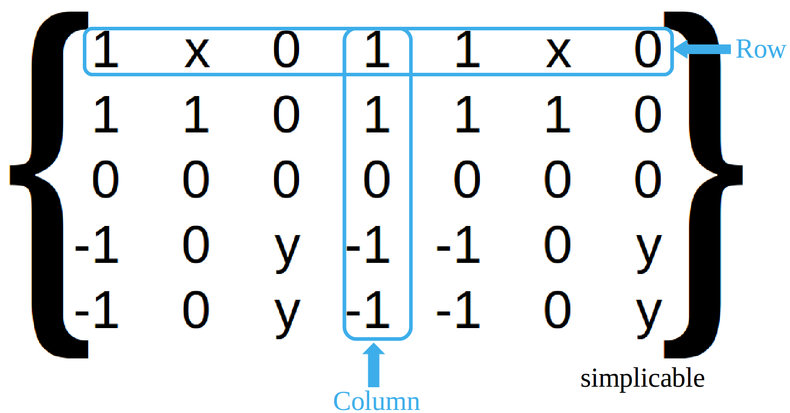
Spreadsheets
Spreadsheets such as Excel are tools for processing tables of data. Rows in a spreadsheet are horizontal from left to right. Columns are vertical from up to down.
Databases
In a database, a row is also known as a record and a column is a field. Conceptually, this is no different from a spreadsheet.
Matrix
A matrix is a two-dimensional structure that contains data organized into rows and columns. Conceptually, this is the same as a database table or spreadsheet.
Tables
Table is a generic term for the two-dimensional grids of rows and columns used in spreadsheets, databases and matrices. For example, tables are commonly used to arrange data and visual elements in a webpage.Column A | Column B | |
Row 1 | some data | some data |
Row 2 | some data | some data |
Physical
Physical things can be organized into rows in columns. For example, seating can be arranged into a grid. In this case, rows are parallel to the front of the room and columns are perpendicular to the front. Another way to say this is that rows go across a room and columns go from front to back.
How to Remember
A column is an architectural term for a support beam that rises vertically through a building. This is a reasonable way to remember the delineation between row and column. Columns always have a vertical feel to them.| Summary | ||
Row | Column | |
Definition | An arrangement of elements that goes from left to right. | An arrangement of elements that goes from up to down. |
Direction | Horizontal | Vertical |
Orientation | Parallel to the horizon or the front of a room. | Perpendicular to the horizon or the front of a room. |
Example | The front row of desks in a classroom. | Columns that are used as vertical structural supports in architecture. |




























